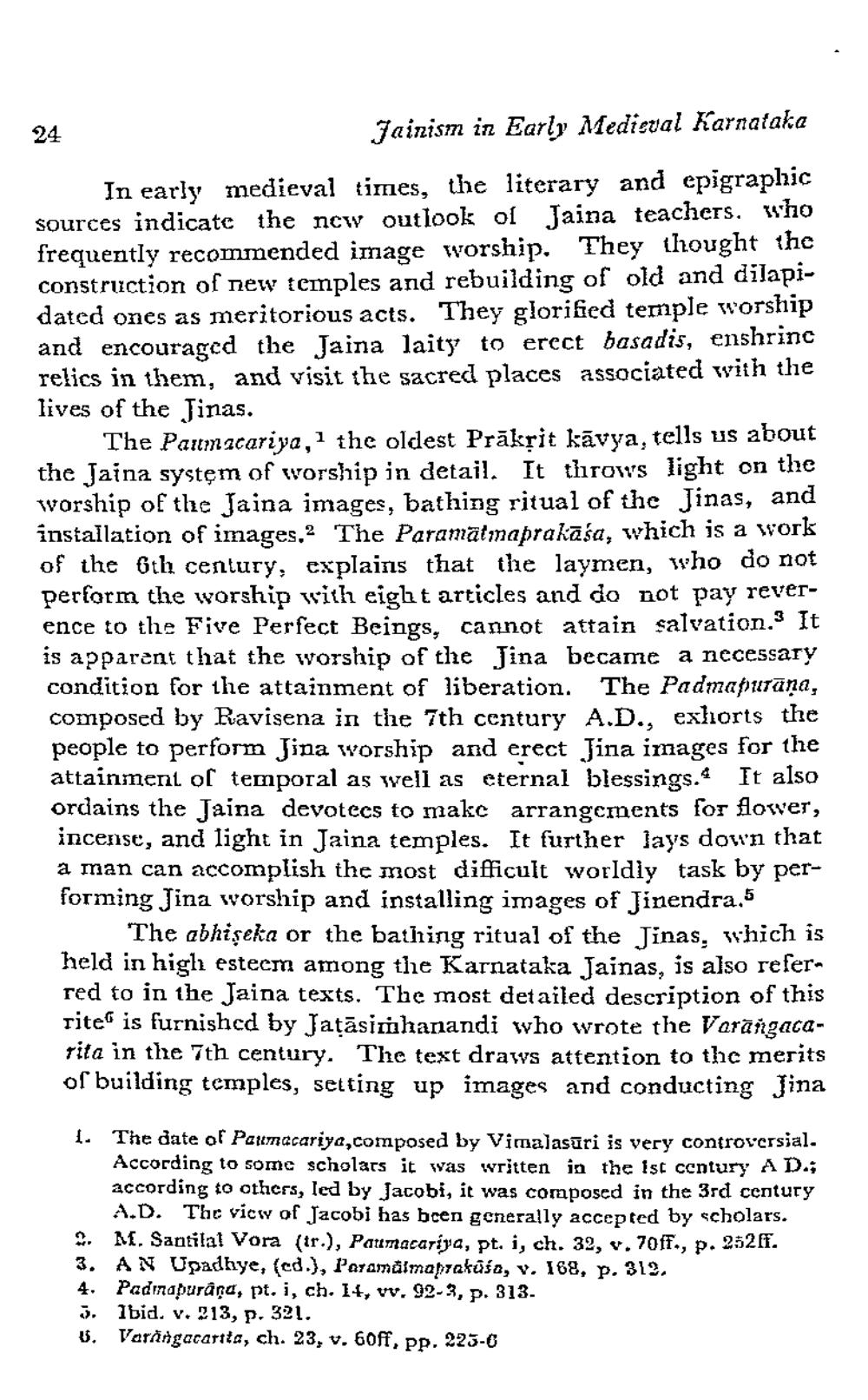________________
24
Jainism in Early Medical Karnataka In early medieval times, the literary and epigraphic sources indicate the new outlook of Jaina teachers, who frequently recommended image worship. They thought the construction of new temples and rebuilding of old and dilapidated ones as meritorious acts. They glorified temple worship and encouraged the Jaina laity to erect basadis, enshrine relics in them, and visit the sacred places associated with the lives of the Jinas.
The Pannacariya, the oldest Prākṣit kāvya, tells us about the Jaina system of worship in detail. It throw's light on the worship of the Jaina images, bathing ritual of the Jinas, and installation of images.2 The Paramātmaprakāśa, which is a work of the 6th century, explains that the laymen, who do not perform the worship with eight articles and do not pay reverence to the Five Perfect Beings, cannot attain salvation. It is apparent that the worship of the Jina became a necessary condition for the attainment of liberation. The Padmapurana, composed by Ravisena in the 7th century A.D., exhorts the people to perform Jina worship and erect Jina images for the attainment of temporal as well as eternal blessings. It also ordains the Jaina devotees to makc arrangements for lower, incense, and light in Jaina temples. It further lays down that a man can accomplish the most difficult worldly task by performing Jina worship and installing images of Jinendra.5
The abhişeka or the bathing ritual of the Jinas, which is held in high esteem among the Karnataka Jainas, is also refera red to in the Jaina texts. The most detailed description of this riter is furnished by Jatāsimhanandi who wrote the Varangacarita in the 7th century. The text draws attention to the merits of building temples, setting up images and conducting Jina
1. The date of Paumacariya,composed by Vimalasari is very controversial.
According to some scholars it was written in the 1st century AD.; according to others, led by Jacobi, it was composed in the 3rd century
A.D. The vicw of Jacobi has bcen generally accepted by scholars. 2. M. Santilal Vora (tr.), Patmacariya, pt. i, ch. 32, v. 70ff., p. 25217. 3. AN Upadhye, (cd.), Paramálmahrakūša, v. 168, p. 312. 4, Padmapurâņa, pt. i, ch. 14, vv. 92-3, p. 313. 3. Ibid. v. 213, p. 321. 1. Varringacarita, ch. 23. v. 60ff, pp. 223-6




